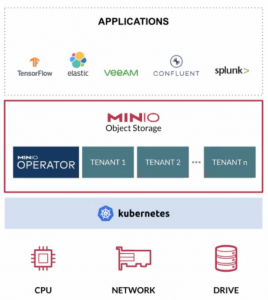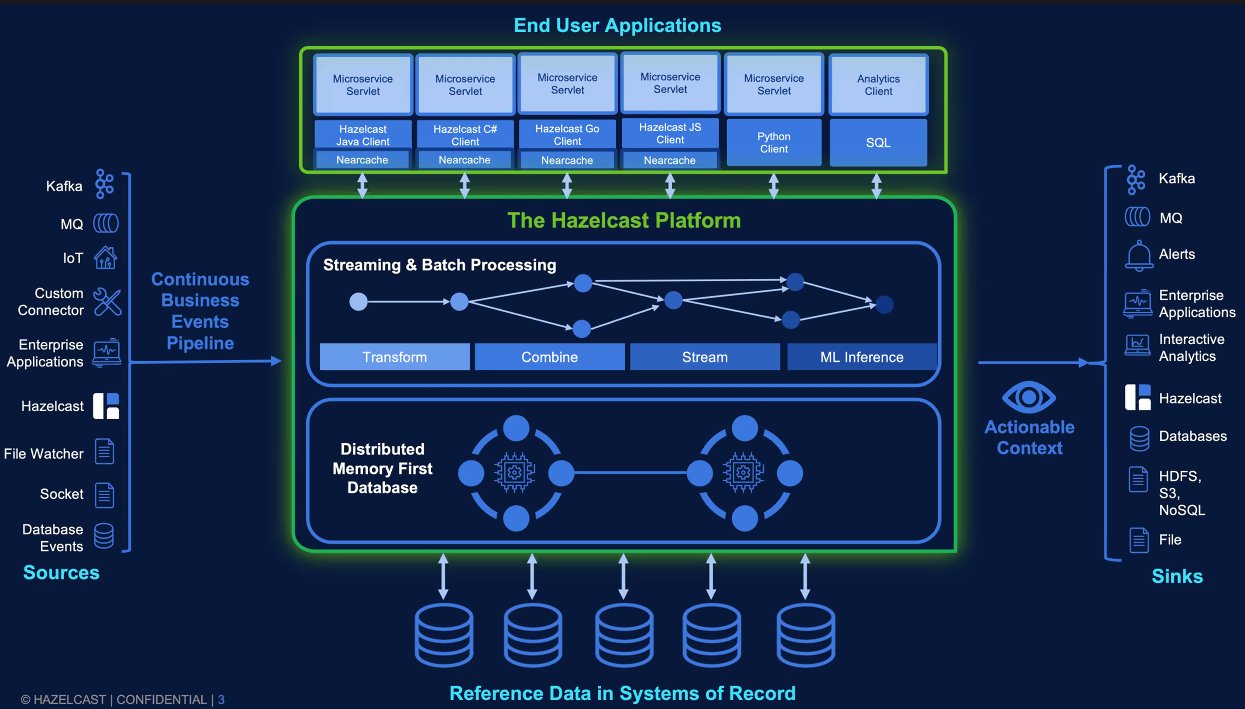The first day at Cloud Field Day 11 has seen three interesting presenters Hazelcast, Morpheus, and MinIO. I take the advantage of the European timezone to start writing this post with some important highlights and give some hot impressions on what the day-one presenters have shown.
Hazelcast
HazelCast is an interesting solution able to boost the speed of data interaction from old and new applications by introducing a particular distributed cache across the infrastructures.
This product is for applications that need to boost speed and performance especially in distributed scenarios where the need for instant access to data is mission-critical (eg. real-time analytics, IoT, etc…). It’s interesting the huge amount of scenarios that can be solved using this technology: from the continuous data streaming, for the edge-to-cloud applications and the integrations with new and old infrastructures and cloud providers.
During the demo, we’ve seen how the distributed memory database works using a kind of abstracted way to access data-logic and using several programming languages.
Hazelcast is available in three versions: Cloud (as a managed service), IMDG (as a dedicated cluster), JET (to run stateful computations over data).
If you want to get started using this technology, simply check the official page: https://hazelcast.com/get-started/
Morpheus
At their fourth presence at FieldDay, Morpheus is rocking the show with a platform able to handle hybrid cloud resources and bridging the gap between IT needs and DevOps resources consumption. In the Kubernetes space, the ability to create scale and maintain several kinds of clusters is what every IT admin would have, especially during infrastructure and cloud transition.

Another cool feature I’ve seen, especially during the demo, is the integration with Terraform that today si the must you have to enable DevOps teams to distribute and maintain every type of application. It seems redundant, but having a Morpheus provider for HashiCorp or launch a Terraform executor inside a Morpheus process is the perfect combo of the infrastructure declarative deployment with more sophisticated ways to extend Morpheus and Terraform platforms.
To summarize, this is a really great platform that brings every infrastructure, application, security, and financial needs in a single product. With an interesting level of integration with new and old technologies and the ability to respond well in ITIL and Agile contexts, Morpheus could be a valid tool to enable the transition from traditional infrastructure to hybrid-cloud, multi-cloud infrastructures, and platforms. If you wanna get more information don’t forget to check the official page: https://morpheusdata.com/
MinIO
 MinIO is a lightweight and fully compatible S3 object storage widely used especially from the DevOps team in cloud-agnostic applications. Today the object storage is a key technology for cloud-native applications and, for sure, it’s the best place to store files and data for multiple purposes, like manipulation, backup,… For sure, more than half-world recognize in S3 the simplest way to interact with data-file and MinIO is going to give the opportunity to have a full S3 compatible bucket that is created using in Kubernetes environment and bring some advanced features that are typical of AWS S3, like replication, data-lifecycle, encryption, etc…
MinIO is a lightweight and fully compatible S3 object storage widely used especially from the DevOps team in cloud-agnostic applications. Today the object storage is a key technology for cloud-native applications and, for sure, it’s the best place to store files and data for multiple purposes, like manipulation, backup,… For sure, more than half-world recognize in S3 the simplest way to interact with data-file and MinIO is going to give the opportunity to have a full S3 compatible bucket that is created using in Kubernetes environment and bring some advanced features that are typical of AWS S3, like replication, data-lifecycle, encryption, etc…
Even if during CFD11 presenters have brought attention to some “limit case” of the usage of the object-storage, I can confirm that in less than a minute it’s possible to an S3-like bucket with a lot of features that can easily scale to an enterprise-grade and multi-cloud storage system. In fact, I already dive into this for a lot of my personal and professional projects and I can say that it’s impressive in how many cases you can use it: development, on-premises deployments, multi-cloud solutions,… and why not! as a backup bucket for Kasten.io (check my post here).
For this reason, my advice here is: do you have a Kube cluster and you need simple object storage? Check MinIO official site: https://min.io/.


[…] Cloud Field Day 11 – Day 1 Highlights […]
[…] https://blog.linoproject.net/cloud-field-day-11-day-1-highlights/ […]